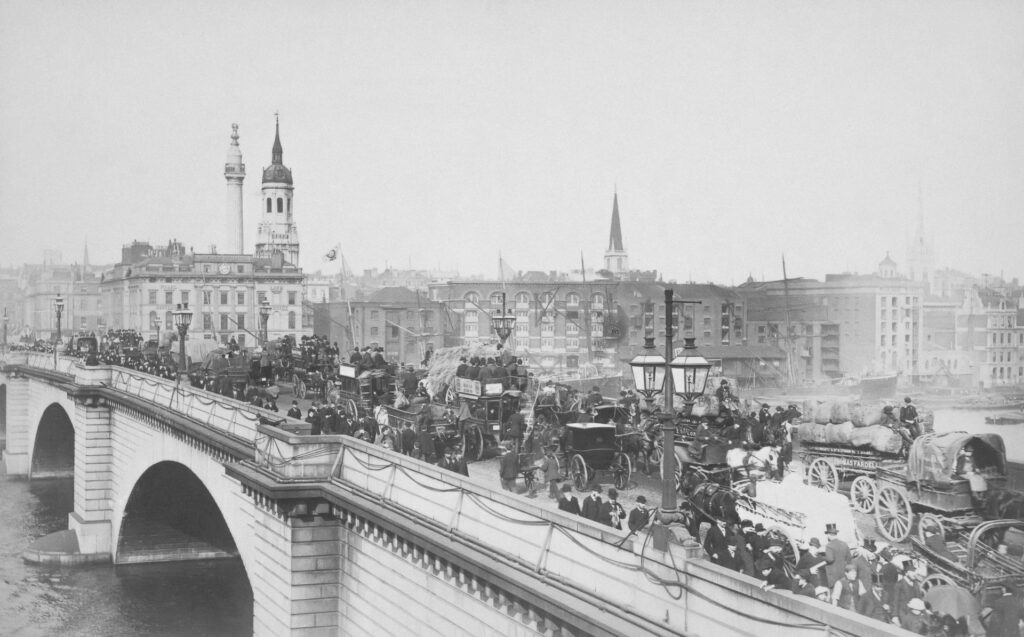
London’s iconic bridges have long played a starring role in the story of the city, linking neighborhoods, enabling trade, and becoming part of its identity. The Original London Bridge is especially notable for its long history and its many challenges over the centuries, including concerns that it was sinking into the River Thames under its own weight.
While most people are familiar with the nursery rhyme, few realize that the original bridge has not been in London for over 50 years. So, where was it moved to, and what made this bridge so important in the first place?
Where It All Began: A Roman Crossing
The very first incarnation of London Bridge dates back almost two thousand years. Built by the Romans around 50 AD, the original structure was likely a temporary military pontoon made of wood, erected shortly after they founded the city of Londinium. It helped connect the fledgling settlement on the north bank with routes leading into Kent and the southern territories of Britannia.
As Londinium grew in importance, so did the need for a more permanent crossing. The Romans eventually replaced their wooden construction with a sturdier version that laid the foundations, quite literally, for the many bridges to come.
The Medieval Bridge That Became a Mini City
The next major transformation came in the 12th century, when a stone bridge was commissioned by Peter of Colechurch, a priest and architect. Completed in 1209 after three decades of construction, the medieval Original London Bridge was a feat of engineering. With 19 stone arches and a drawbridge to let ships through, it was unlike anything else in Britain at the time.
But it wasn’t just a bridge. It was a bustling high street. At its peak, around 200 buildings lined the bridge. Homes, shops, and even a chapel dedicated to St Thomas Becket. This dense construction, however, came at a cost. Fires frequently broke out, the roadway was cramped and chaotic, and over time, the bridge became dangerously overloaded.
Disasters and Legends of the Original London Bridge
Over the years, the bridge endured centuries of disaster and change. It survived the Great Fire of 1666, though only just, and withstood floods, ice, and civil unrest. The bridge also became a popular feature in literature and art. And, of course, it inspired the famous nursery rhyme, ‘London Bridge is Falling Down,’ which some believe refers to Viking attacks, structural decay, or simply the frequency with which it needed repairs.
The London Bridge 19th Century Rebuild
By the 1800s, it was clear that the medieval bridge could no longer cope with London’s growing population and traffic. In 1831, a new granite bridge, designed by engineer John Rennie, was opened a few meters west of the original. Rennie’s bridge was wider, stronger, and better suited to modern demands. The old structure was dismantled, marking the end of a 622-year chapter in London’s history.
How London Bridge Ended Up in the Arizona Desert
By the 1960s, Rennie’s 19th-century bridge was struggling. Its foundations were sinking into the Thames, and traffic congestion had once again reached breaking point. Rather than demolish it, the City of London Corporation made the bold decision to sell it.
In 1968, American entrepreneur Robert P. McCulloch bought the bridge for $2.46 million and had it shipped, stone by stone, to Lake Havasu City in Arizona, a town he was developing in the Mojave Desert.
Each granite block was carefully labelled, transported across the Atlantic, and reassembled on American soil. The reconstruction was completed in 1971, turning the Original London Bridge into one of the most unexpected tourist attractions in the United States.
Visiting the Original London Bridge in America Today
If you visit Lake Havasu City today, you’ll find the original 1831 London Bridge spanning a man-made canal along the Colorado River. It looks almost out of place in the desert surroundings, an elegant piece of Victorian engineering set against a backdrop of palm trees and wide-open skies.
Visitors can stroll across the bridge, admire the British-themed shops nearby, and even spot some of the original features, like the ornate lamp posts made from melted-down cannons from the Napoleonic Wars.
It might not be the oldest bridge in London anymore, but it remains a living slice of British history, just with a bit more sun.
The London Bridge Now
Back in the UK capital, a newer concrete and steel bridge, completed in 1973, now bears the name London Bridge. While not as architecturally stunning as Tower Bridge (often confused with its neighbor), the current London Bridge is still a vital artery for the city, serving cars, pedestrians, and trains. It’s also a great spot to soak up a view of the Thames and admire London’s ever-evolving skyline.
Whether you’re captivated by the story of the original London Bridge or keen to explore other world-famous spans like the Brooklyn Bridge or Golden Gate Bridge, SIXT makes it easy. With SIXT, you can rent a stylish, reliable vehicle and hit the road to discover this unique piece of British history under the wide-open skies, and plenty more unexpected adventures nearby.